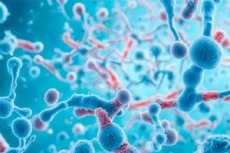New publications
Scientists engineer unique immune cells to create effective cancer vaccine
Last reviewed: 27.07.2025

All iLive content is medically reviewed or fact checked to ensure as much factual accuracy as possible.
We have strict sourcing guidelines and only link to reputable media sites, academic research institutions and, whenever possible, medically peer reviewed studies. Note that the numbers in parentheses ([1], [2], etc.) are clickable links to these studies.
If you feel that any of our content is inaccurate, out-of-date, or otherwise questionable, please select it and press Ctrl + Enter.

In a new study published in Cancer Immunology Research, scientists at the Icahn School of Medicine at Mount Sinai have developed a new method for generating billions of rare immune cells known as conventional dendritic cells type I (cDC1), potentially opening the way to a new class of off-the-shelf cellular cancer vaccines.
These dendritic cells play a key role in triggering and sustaining the immune response against tumors. They are extremely rare in the human body and difficult to isolate in large quantities. A new serum-free culture system developed by the Mount Sinai team makes it possible to produce nearly 3 billion functional cDC1s from just 1 million cord blood-derived hematopoietic stem cells (HSCs), an achievement that has never been achieved before.
“This is an important step toward creating universal cell-based cancer vaccines,” said senior study author Nina Bhardwanj, MD, PhD, the Ward-Coleman Chair in Cancer Research and director of the Vaccine and Cellular Therapy Laboratory at the Icahn School of Medicine at Mount Sinai.
“Type I conventional dendritic cells are essential for mobilizing the immune system to fight cancer, but they have been virtually impossible to produce at the scale needed for clinical use. Now we have overcome that hurdle.”
Unlike other types of dendritic cells, cDC1s have a unique ability to cross-present tumor antigens, a key mechanism for activating cancer-fighting T cells. Their presence in tumors is strongly associated with better treatment outcomes and a successful response to immune checkpoint inhibitors. However, in patients with cancer, cDC1 numbers and function are often reduced.
“Our method not only enables scalable production of cDC1, but also preserves their ability to elicit a potent antitumor immune response in preclinical models,” said Srikumar Balan, PhD, co-author of the study and an associate professor in the Department of Hematology and Medical Oncology at the Icahn School of Medicine.
“This opens the door to developing off-the-shelf cell vaccines that could be useful across multiple cancer types.”
The study, conducted in collaboration with the Mather Research Institute in Brisbane, Australia, used humanized mouse models to test the ability of lab-grown cDC1 to function as a cancer vaccine.
This is the first example of scalable production of authentic, functional human cDC1 using a serum-free protocol. The researchers were able to generate nearly 3 billion cDC1 from just 1 million cord blood-derived HSCs. Not only did these cells retain their identity and purity, they also demonstrated critical immune functions — including efficient antigen cross-presentation and the ability to activate T cells — making them a highly effective vaccine platform. These cDC1 were then tested in vivo in humanized tumor models, where they showed the ability to elicit a strong anti-tumor immune response.
The implications of this work are wide-ranging. First, it lays the groundwork for a new type of cancer immune therapy: a universal, off-the-shelf cellular vaccine that harnesses the body’s own immune system to fight cancer. Because cDC1s play a central role in triggering a potent T-cell response, this approach could greatly improve the effectiveness of existing treatments such as checkpoint inhibitors and be adapted for use across a range of malignancies.
Second, the method provides researchers with an unprecedented tool to study cDC1 biology in both health and disease, helping to uncover new aspects of their role in immune surveillance and tumor resistance.
“This is not just about scaling up cell production,” added Dr. Bhardwanj.
“This is about transforming how we develop immunotherapies: making them more effective, more accessible, and more personalized.”
